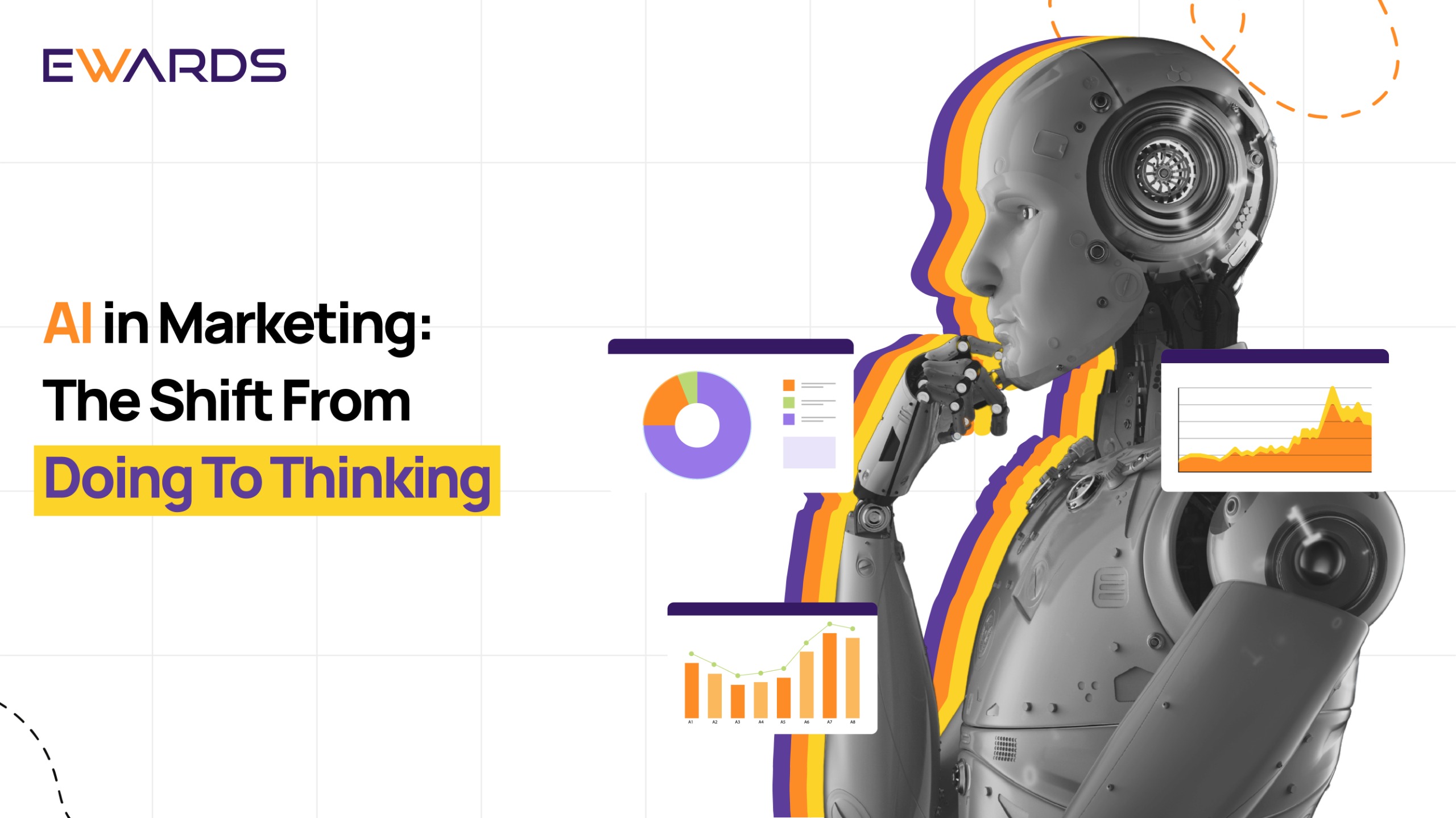
What if your marketing strategy could think for itself?
What if, instead of just automating tasks like sending emails and scheduling posts, your AI tool could analyze data, predict trends, and adapt to your approaches in real-time? This shift is already happening now, and AI is no longer just a tool used for automation. Instead, it is your game-changing partner that is changing how you interact with your customers.
In this article, let’s explore how AI has moved from your execution partner to your intelligent, data-backed decision-making partner.
AI in Traditional Automation
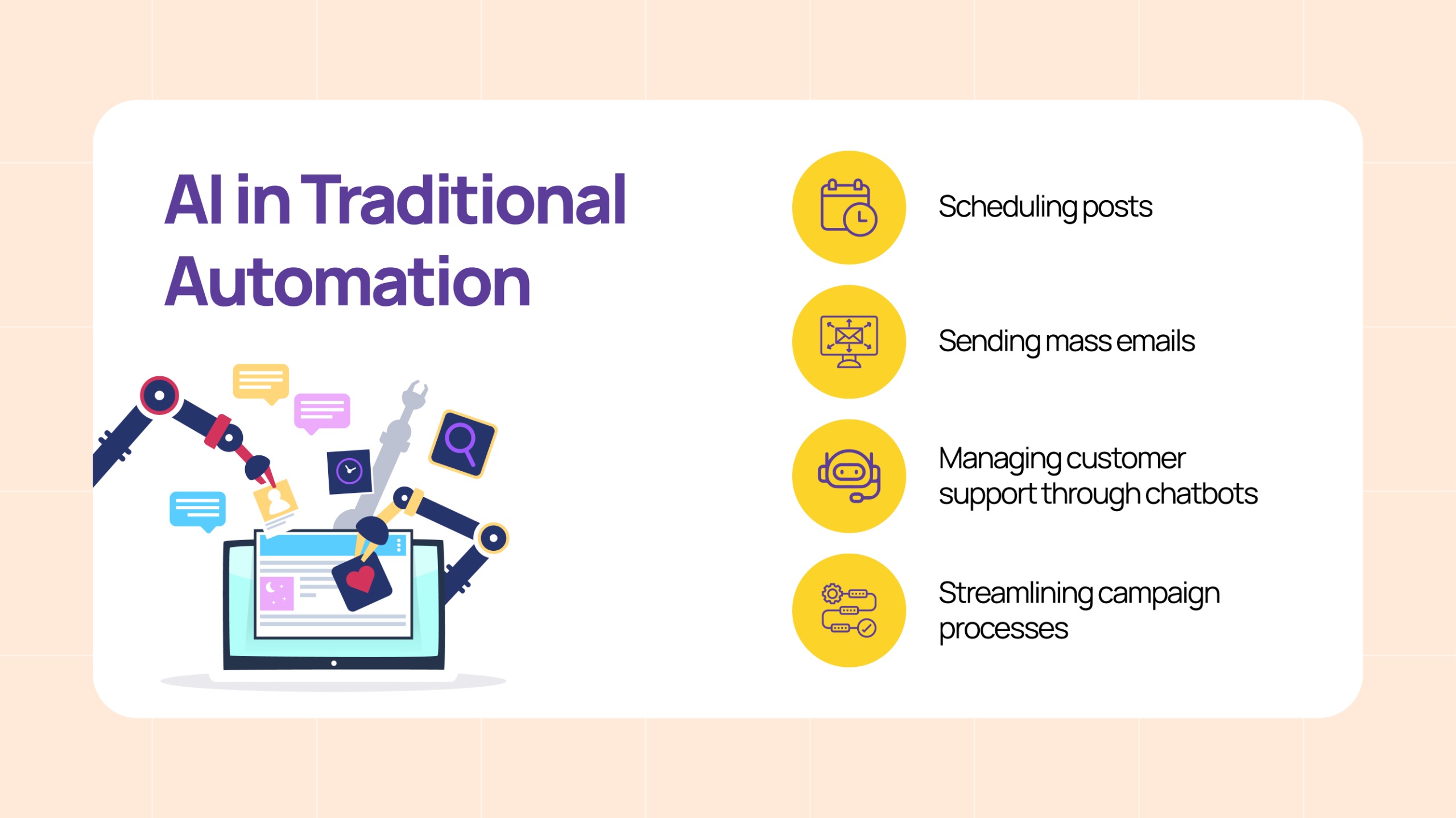
AI was first incorporated into Marketing with the idea of automation, like scheduling posts, sending mass emails, managing customer support through chatbots, streamlining campaign processes, and more. These tasks that once required tedious manual effort suddenly became quick and cost-effective.
But here’s the catch: Automation doesn’t think.
It could follow commands, but it could not generate insights or adapt to the changing circumstances. Sure, AI was helping us save time, but were we utilizing its full potential?
Rise of Insight-Driven Marketing Powered by AI
Did you know?
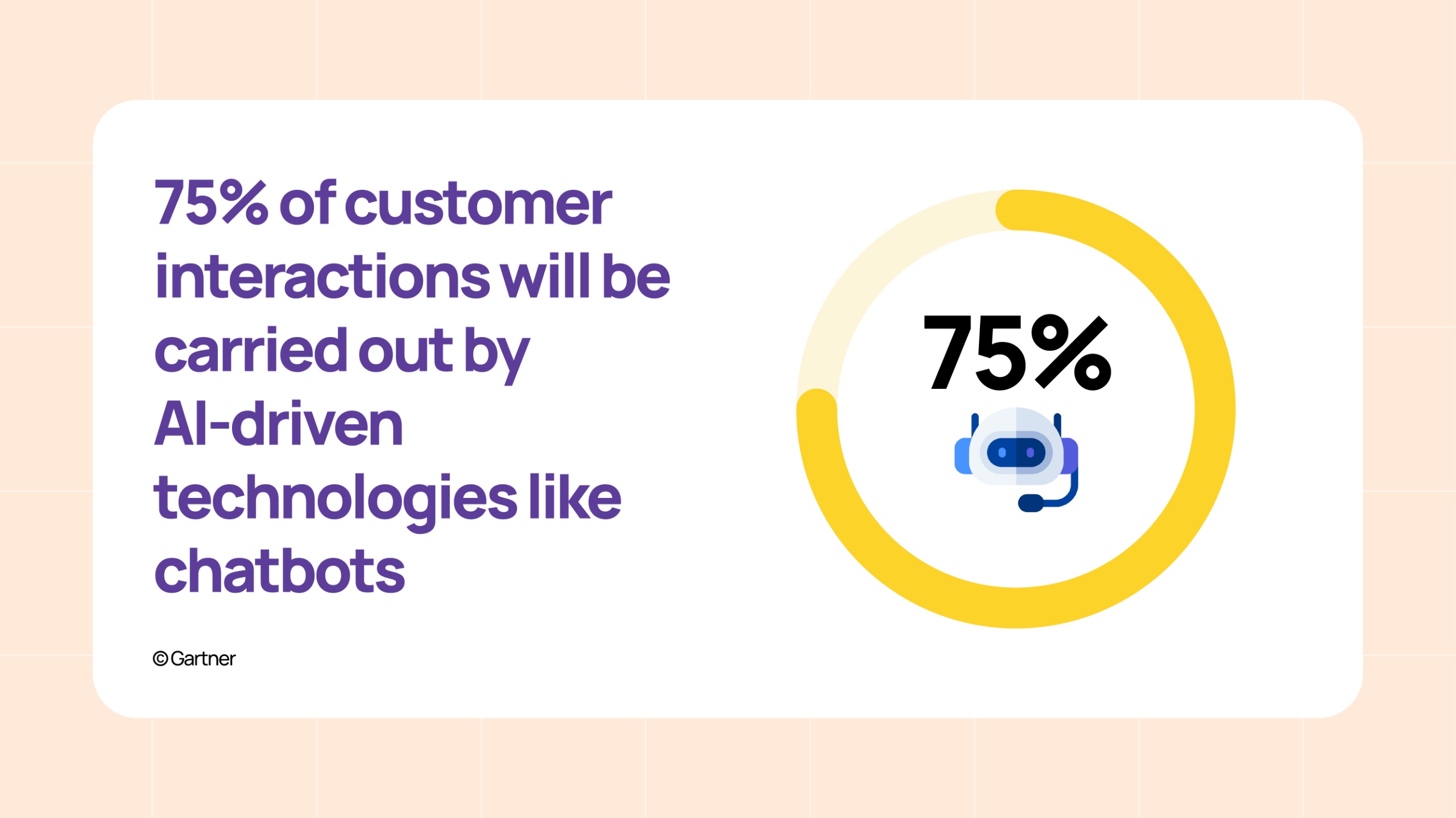
This is because it would provide quicker solutions and a better customer service experience. This highlights that there is a huge shift in using AI from merely automating tasks to becoming a strategic center for marketing efforts.
Thus, AI in marketing is not just about automating tasks but also about driving decisions. With advancements in this cutting-edge technology, AI is now being used to uncover deeper insights about customer behavior and predict trends. It is also helping marketers to make real-time adjustments to their marketing strategies.
For instance, Netflix is one of the brands that uses AI to understand their customers’ preferences. With this, they predict what shows or movies their users would like and thus recommend content accurately. Therefore, Netflix uses AI not for automation but for personalization.
AI in Data-Driven Decision-Making
In the changing world, a brand’s marketing strategy is nothing without data, and data is nothing without AI. Confused?
Consider this: You have a large set of unorganized data, and you don’t know how exactly it will fit into your marketing strategy. Enter AI.
AI is known for its ability to analyze massive sets of data, which helps marketers find patterns, trends, and insights that would otherwise be hard to figure out. This is exactly what Amazon does. They make use of their AI-driven recommendation engine, which analyzes the past purchase habits, search behavior, and preferences
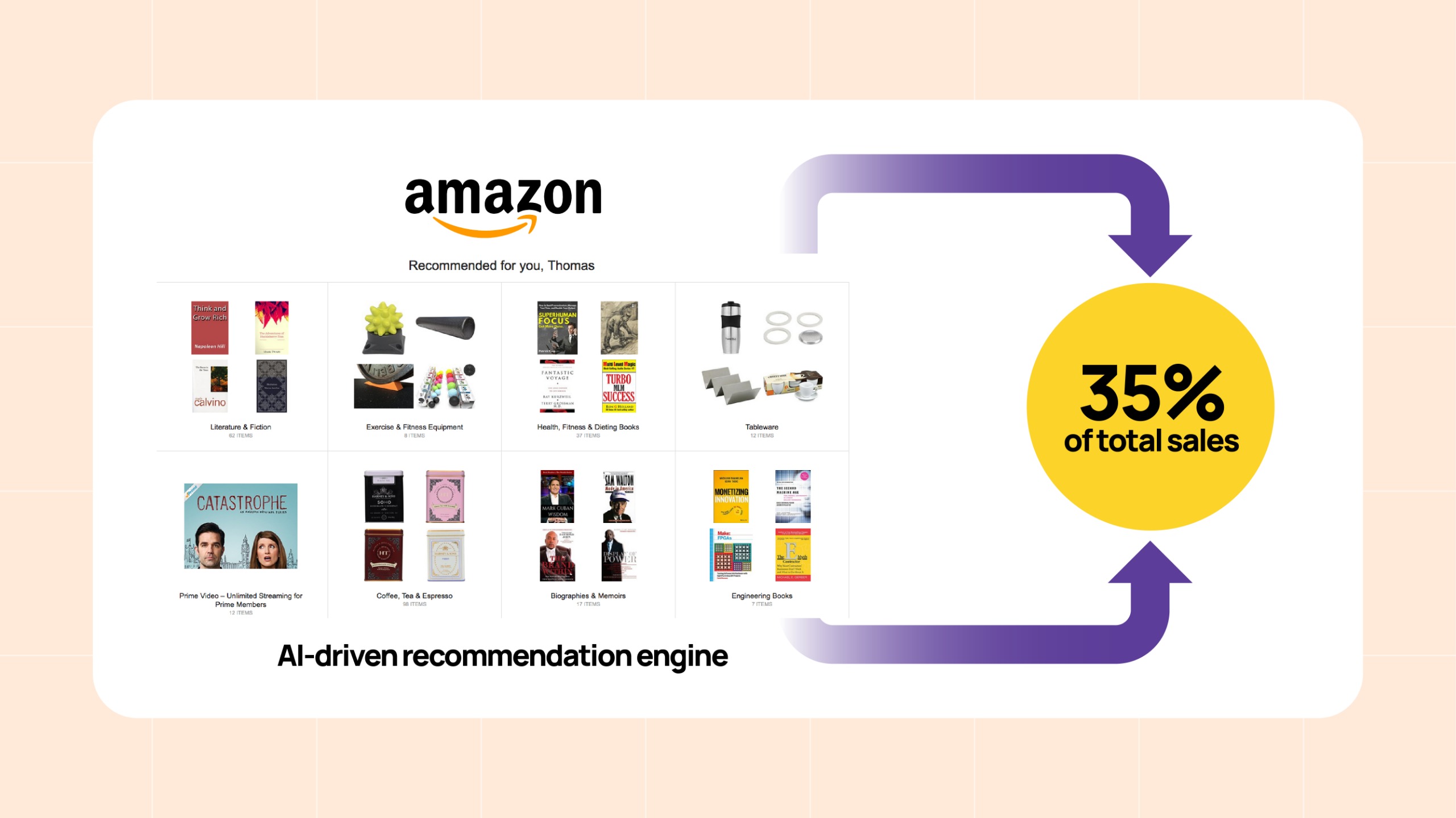
This level of personalization is beyond the capability of human marketers and highlights the role of AI in being more than just an automation tool.
Role of AI in Customer Experience
Do you know that you can use AI to create hyper-personalized experiences so that your customers feel that they are the only ones present in the room?
Artificial intelligence makes use of advanced algorithms that can enhance every customer interaction with tailored experiences so that your customers feel heard, valued, and seen. This is best done by Spotify. This music platform uses AI to create curated personalized playlists for their users by analyzing listening patterns, location data, and even the time of the day. Understanding the patterns from this information helps the brand suggest content that fits the unique vibe of the user.
AI in Predictive & Prescriptive Analytics
The AI’s Predictive and prescriptive analytics are changing the way businesses approach their marketing strategies, taking them from a reactive posture to a proactive one. For marketers, this shift means the ability to anticipate customer needs, optimize marketing campaigns, and improve decision-making processes, all in real-time.
Predictive Analytics
Predictive Analytics uses historical data, algorithms, and machine learning to predict future trends and behavior. Rather than reacting to what’s already happened, predictive analytics allows brands to anticipate what will happen next. This is critical for improving customer retention, optimizing marketing spend, and even forecasting sales.
At the core of predictive analytics is machine learning (ML), which is constantly learning and evolving based on new data. This is where AI’s ability to “think” begins to shine. It recognizes patterns in massive datasets and can predict customer actions with remarkable accuracy. This includes predicting which customers are most likely to make a purchase, identifying which products will gain traction in the market, or forecasting seasonal buying trends.
Key Insights:
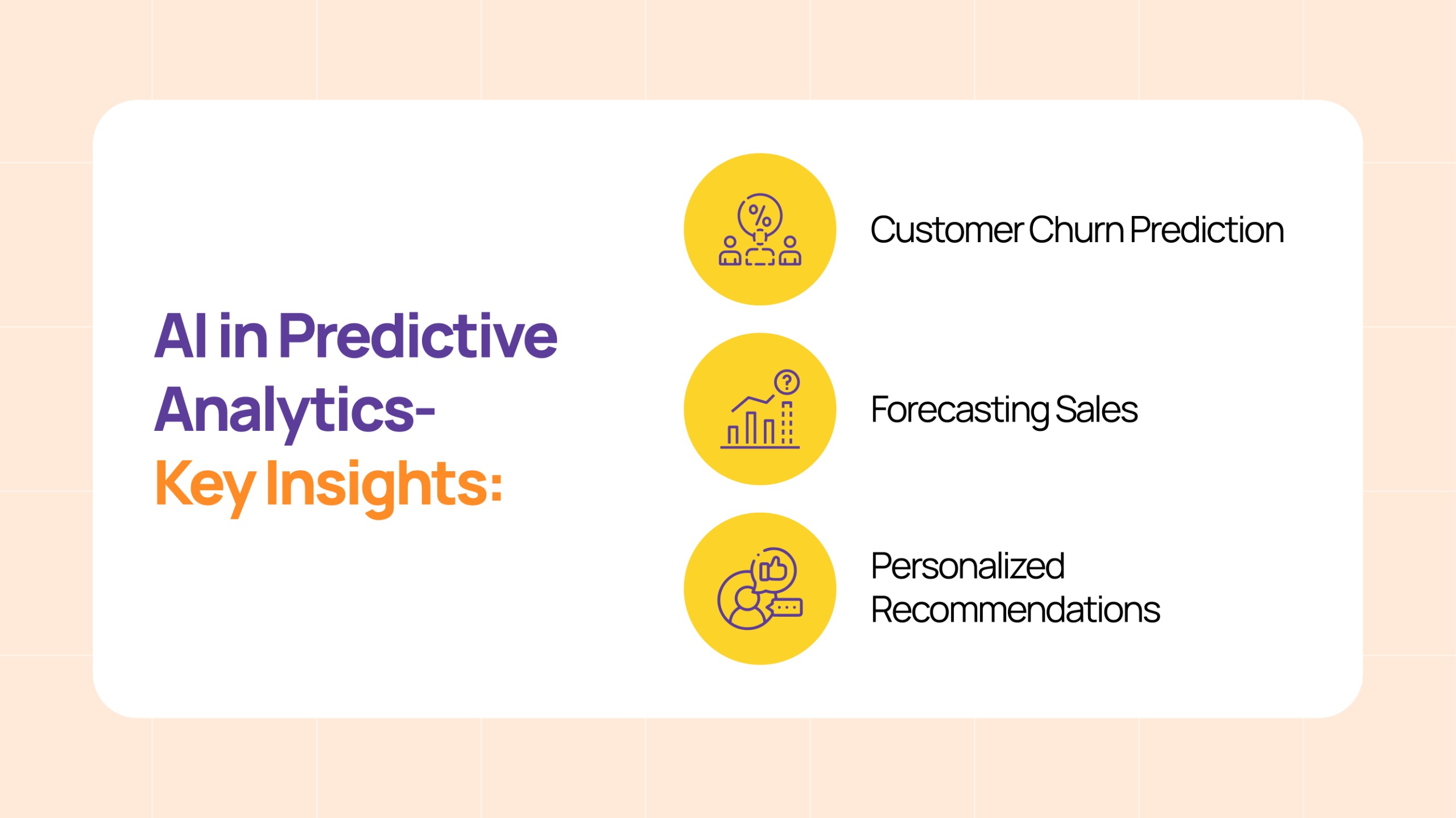
- Customer Churn Prediction: Predictive analytics allows businesses to identify customers who may be at risk of churn, allowing brands to intervene before it’s too late.
- Forecasting Sales: By analyzing past sales data and trends, AI can predict future sales volumes, helping brands optimize inventory management and avoid stockouts or overstocking.
- Personalized Recommendations: AI-driven predictive models analyze customer preferences and behavior, allowing brands to offer highly targeted and relevant product recommendations at scale.

For example, Target uses predictive analytics to anticipate customer needs. Through machine learning algorithms, the brand is known to predict future buying behavior, which helps them in recommending products at the right time—before the customer even thinks about it. This algorithm helps the brand determine when a customer might be interested in purchasing certain items based on previous behaviors and external factors like time of year, trends, or even social media activity.
Prescriptive Analytics
While predictive analytics tells you what is likely to happen, prescriptive analytics, on the other hand, goes a step further by offering actionable insights and recommendations. It suggests the best course of action to achieve the desired results, utilizing the true power of AI – decision-making.
Prescriptive analytics combines insights from predictive models with optimization algorithms and data analysis to suggest specific actions that should be taken. It acts as a bridge between foresight and execution.
The core technology behind prescriptive analytics is optimization algorithms and simulation models where a system runs multiple scenarios and simulations to identify the most effective action to achieve a goal. It’s like having an AI-powered marketing strategist on your team who constantly evaluates the best strategies to drive results.
Key Benefits of Prescriptive Analytics:
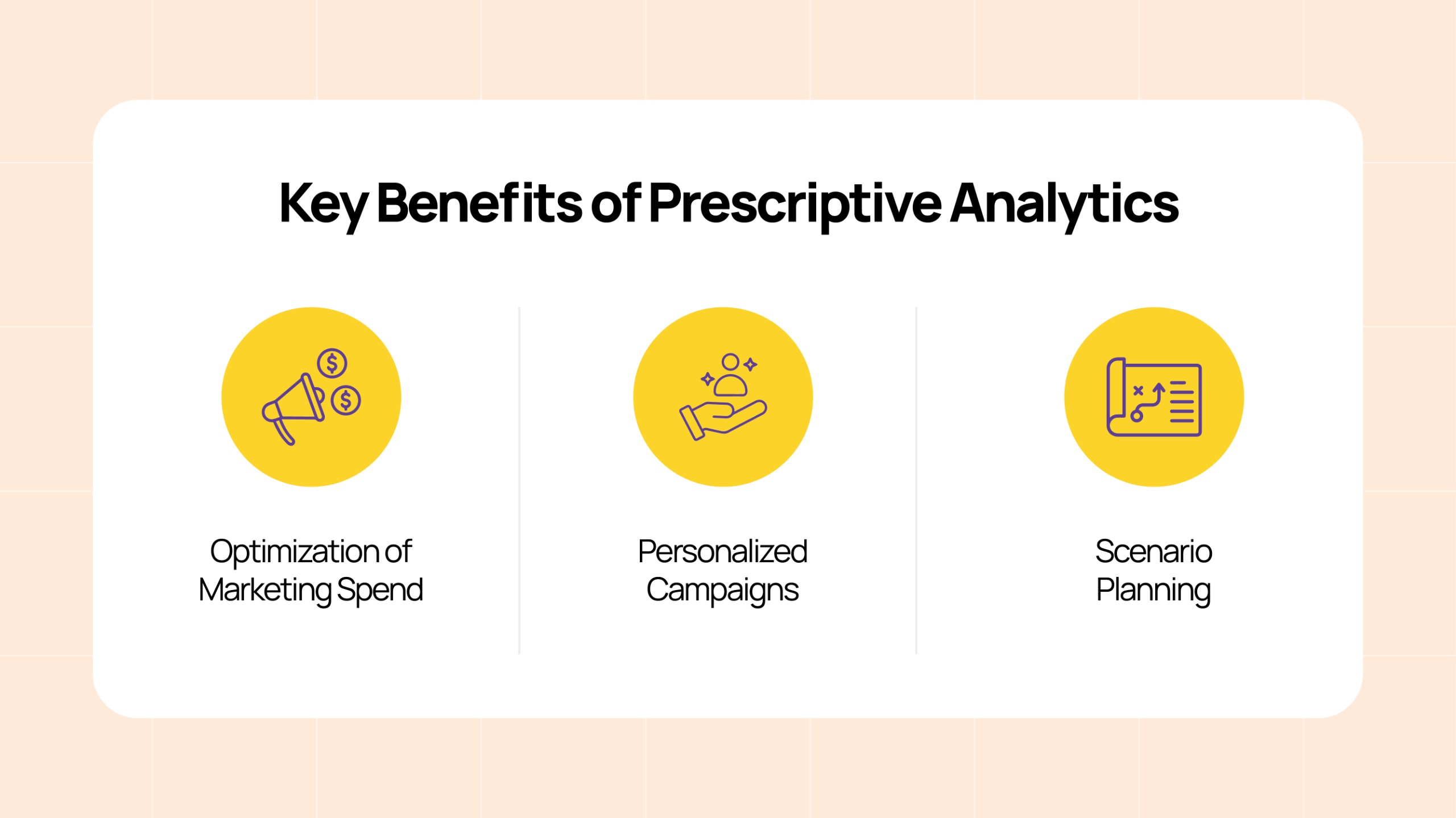
- Optimization of Marketing Spend: Prescriptive AI can recommend the most efficient allocation of a marketing budget across channels, ensuring that every dollar spent maximizes return on investment.
- Personalized Campaigns: By analyzing the predicted behavior of different customer segments, prescriptive analytics can suggest the best content and offers for each individual, optimizing engagement.
- Scenario Planning: It allows brands to simulate various strategies and choose the one that’s most likely to succeed based on current data, market conditions, and customer insights.
For instance, Coca-Cola uses prescriptive analytics for campaign optimization. Based on predictive models, Coca-Cola recognizes that a certain demographic is likely to purchase during a holiday season, but with prescriptive analytics, the brand exactly understands how to target that demographic most effectively—whether through specific messaging, timing, or promotional offers.
Future of AI in Marketing: Working Smarter, Not Harder

Imagine an AI that can generate an entire ad campaign, tailored to specific customer segments, based on ongoing analysis of customer data and industry trends.
Considering the ongoing scenario, the future of AI in marketing lies in Generative AI, which will not only predict what customers want but will also generate content, strategies, and entire campaigns depending on customer behavior, market trends, and past successes.
Generative AI will allow marketers to automate the creative process—writing copy, designing graphics, and creating personalized offers without manual input. This will enable brands to move from being reactive to proactive, where AI will be the key aspect of everything. Starting from providing the tools to predict customer needs before they even express them and allowing engaging with customers on a deeper level.
Conclusion
The shift from doing to thinking does not mean that you need to add more AI to your marketing strategy; It means that you need to embrace AI’s ability to provide intelligent, real-time insights that will guide smarter decisions. This means that brands that adopt AI as a strategic partner will not only automate tasks but will also harness AI’s power to predict trends, personalize experiences, and adapt in real-time to customer needs.
So, the big question is: Is your marketing ready to move from doing to thinking?